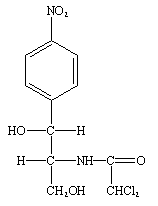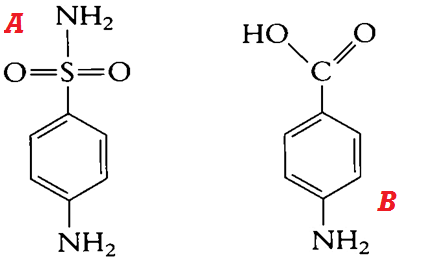To be clinically effective for the treatment of infectious diseases, every drug must reach a certain level of bioavailability in vivo; and this is critical because drugs contain other constituents aside the actual portion of the medicine which is necessary to express antimicrobial action in the recipient host.
The bioavailability of a drug is the actual portion of an administered drug that reaches the systemic or entire circulation of the recipient host in a chemically and effective unchanged form. It helps physicians or scientists to know the actual amount or concentration of the drug that was actually absorbed by the body after administration either parenterally or orally. Aside the actual fraction necessary for antimicrobial activity in vivo drugs also contain other additional constituents such as excipients (e.g. drug dispersing agents or delivering agents) amongst others which may directly or indirectly affect their bioavailability in the systemic circulation.
Excipients are substances added to drugs during their production in order to make them into pills (i.e. as capsules or tablets). The metabolic rate of the drug, its chemical instability in vivo as well as their solubility and mode of formulation are additional factors that affect the bioavailability of a drug; and these factors must be considered and taken care of during the formulation or production of drugs in order to develop clinically effective medicines.
Nevertheless, the absorption of a drug (i.e. the transfer of a drug from its initial site of administration to the bloodstream or general circulation) could also be slightly affected by their route of administration (either parenterally or orally); and as such a lower bioavailability of the drug will be experienced in such scenarios.
And this explains the reason why drugs administered parenterally often reach systemic circulation faster than orally-administered medications because parenteral drugs are administered directly into the bloodstream (e.g. intravenously) while drugs taken orally first reaches the gastrointestinal tract (GIT) where it permeates or dissolves in the GIT fluids and then infiltrate the epithelial cells of the GIT for its distribution to the entire body or bloodstream.
Some other factors such as food, the disease state of the individual and the co-administration of two different drugs may also affect the effectiveness of a primary drug. And this leads us to drug interaction.
Drug interaction is simply defined as the biological phenomenon in which the antimicrobial activity of a particular drug is influenced or affected by other substances (e.g. food, drinks or herb) or another medication. In drug interaction, the antimicrobial activity of a particular drug is either amplified or diminished; and this phenomenon usually occurs when drugs are co-administered with other substances that produce similar or contradictory effect as the drug in vivo.
The sole purpose of taking medications is to control the problematic activities of infectious disease agents (i.e. pathogenic microorganisms) either through prevention or curing; and it is important that in the course of drug administration that the medications not just reach their target tissues and/or pathogen but that therapeutic levels of the drug required to commence antimicrobial onslaught is available.
It is also important that prior to antimicrobial administration that the antimicrobial susceptibility profile of the target pathogenic microorganism is known beforehand especially via susceptibility test results; and this practice ensures that the most effective antimicrobial agent or drug is used to treat the disease or infection. And susceptibility test results also help to assuage the chances of selection of resistant pathogenic microorganism on or after antimicrobial therapy.
Drug interaction can be achieved clinically especially when the efficacy of two different drugs combined outweigh the effectiveness of the individual drugs especially when they are used separately. For example, some drugs when taken orally are easily excreted from the body even before they must have achieved their antimicrobial function in vivo; and in such cases the easily-excreted drug (in this case the primary drug) can be co-administered with another drug (the secondary drug) that reduces the excretion of the primary drug from the body.
Drugs that are easily metabolized after administration and before they reach their target site in the body loses their therapeutic effectiveness; and to prevent such development, the drug can be co-administered with another medication that help to prevent its metabolism so that the primary drug can reach its target site in the body to unleash its antimicrobial potential. Such interactions between two or more different drugs are generally known as drug-drug interaction.
Drug-herb interactions and drug-food interactions can also exist; and in such situations the effectiveness of the chemotherapeutic agent may be undermined because the drug is reacting with a different chemical agent that may perhaps produce a new effect that adversely affect the recipient host or reduce the effectiveness of the drug. This is why it is critical to take drugs based on doctor’s prescription or guidelines to prevent adverse drug-drug interactions or drug-food and drug-herb interactions which are possible factors that may diminish the antimicrobial efficacy of the drug and probably allow resistant strains of pathogenic microorganisms to emerge and spread.
Alterations in the pharmacokinetic and pharmacodynamic properties of a drug may also result in drug interactions. Drug interactions may be synergistic or antagonistic depending on the type of outcome that is expected from the combination of two or more drugs during antimicrobial therapy.
In synergistic drug interaction, two or more drugs are combined together in order to achieve a therapeutic effectiveness that is greater than the efficacy of the individual drugs added together. Some drugs especially those that target Mycobacterium tuberculosis (the causative agent of tuberculosis) and some viral agents such as human immunodeficiency virus (HIV) are usually combined clinically to achieve synergism.
When two drugs (e.g. drug A and drug B) are combined in such a way that drug B for example reduces or blocks the therapeutic defectiveness of drug A then antagonism is achieved. And antagonistic drug interaction can occur in scenarios in which a given drug interact and interfere with the absorption of another drug in the GIT or in any other target site of the body.
The therapeutic effectiveness of a drug apart from being amplified when two or more drugs are combined (as is obtainable in synergistic drug interaction) can also be potentiated (i.e. boosted); and in drug interaction by potentiation one drug enhances the therapeutic effectiveness of another drug when the two drugs are therapeutically combined.
References
Arora D.R (2004). Quality assurance in microbiology. Indian J Med Microbiol, 22:81-86.
Ashutosh Kar (2008). Pharmaceutical Microbiology, 1st edition. New Age International Publishers: New Delhi, India.
Axelsen P.H (2002). Essentials of antimicrobial pharmacology. Humana Press, Totowa, New Jersey, USA. Al-Jasser A.M (2006). Extended – Spectrum Beta – Lactamases (ESBLs): A Global Problem. Kuwait Medical Journal, 38(3):171-185.
Bisht R., Katiyar A., Singh R and Mittal P (2009). Antibiotic Resistance – A Global Issue of Concern. Asian Journal of Pharmaceutical and Clinical Research, 2 (2):34-39.
Block S.S (2001). Disinfection, sterilization and preservation. 5th edition. Lippincott Williams & Wilkins, Philadelphia and London.
Joslyn, L. J. (2000). Sterilization by Heat. In S. S. Block (Ed.), Disinfection, Sterilization, and Preservation (5th ed., pp. 695-728). Philadelphia, USA: Lippincott Williams and Wilkins.
Nally J.D (Ed.) (2007). Good manufacturing practices for pharmaceuticals. Sixth edition. Informa Healthcare USA, Inc, New York.
Discover more from Microbiology Class
Subscribe to get the latest posts sent to your email.





